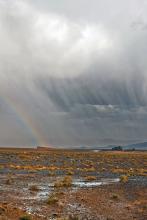A place for everything
Our editor – imagine a combination of Mitch McConnell and SpongeBob SquarePants – is a big fan of the year-in-review list and said we should do one. But he turned down our idea for “Top 10 reasons not to do a year-in-review list,” so we’re doing the next-best thing: reporting on someone else’s.
We came across a list on Vice.com that was right up our alley, so to speak: “What did we get stuck in our rectums last year?”
It’s the latest edition of an annual list compiled by Barry Petchesky, who says he’s “been chronicling our country’s cavity misadventures” for a decade using data from the U.S. Consumer Product Safety Commission’s National Electronic Injury Surveillance System (NEISS) database.
After you’re done here, we strongly urge you to check out Mr. Petchesky’s full list, which covers all of the major bodily orifices and is not limited to rectums. In the meantime, here are a few highlights, with quotes from the actual NEISS reports when necessary:
- Christmas ornament (ear).
- Egg timer (rectum).
- “Jumped off couch landed on spoon” (vagina).
- Christmas ornament (nose).
- Small shampoo bottle (rectum).
- Large shampoo bottle (rectum).
- Christmas ornament (throat).
- “Was using prostate massager & it got ‘sucked in’ ” (rectum).
- Coaxial cable (penis).
- Christmas ornament (rectum).
The weather stinks today
On the surface, the El Niño–Southern Oscillation isn’t the most impressive phenomenon in the world. The tropical eastern Pacific Ocean isn’t a small area, but there’s a lot of ocean out there, and the temperature difference from the norm during El Niño and its less well-known sister, La Niña, is only a few degrees.
But that blob of water can have massive effects on the world’s climate, causing drought and heat waves in some areas while being responsible for increased storms and massive amounts of rainfall and diarrhea in others.
“Wait, hang on – what was that last one?” you’re probably asking.
Yes, we’re going from “things stuck in our rectums” to “things very much not stuck in our rectums” thanks to a study published in Nature Communications. According to the researchers from Columbia University, La Niña (cooler water) is linked to increased diarrhea in young children in Botswana. During La Niña years, incidence of diarrhea in children aged 5 years or younger is 30% higher than in non–La Niña years.
It does make sense when you think about it. In southern Africa, La Niña is associated with cooler weather, increased rainfall, and more flooding during the rainy season. The aftermath of extreme rainfall events is often a breeding ground for waterborne pathogens. And so the diarrhea flows.
So, if you happen to be reading this from Botswana, pay attention to the news. If the meteorologists start talking about La Niña, you may want to stock up on oral rehydration salts and zinc.


